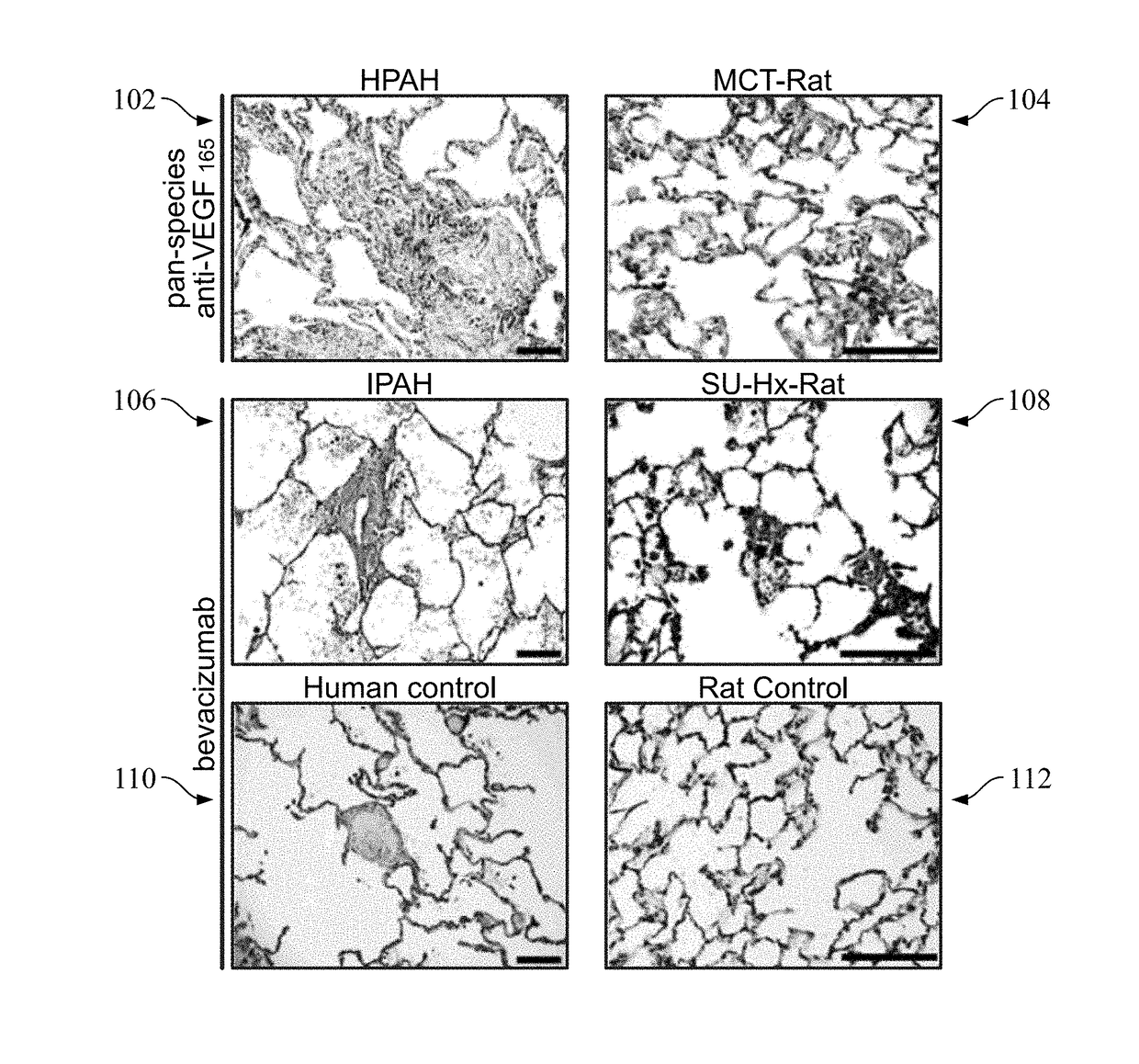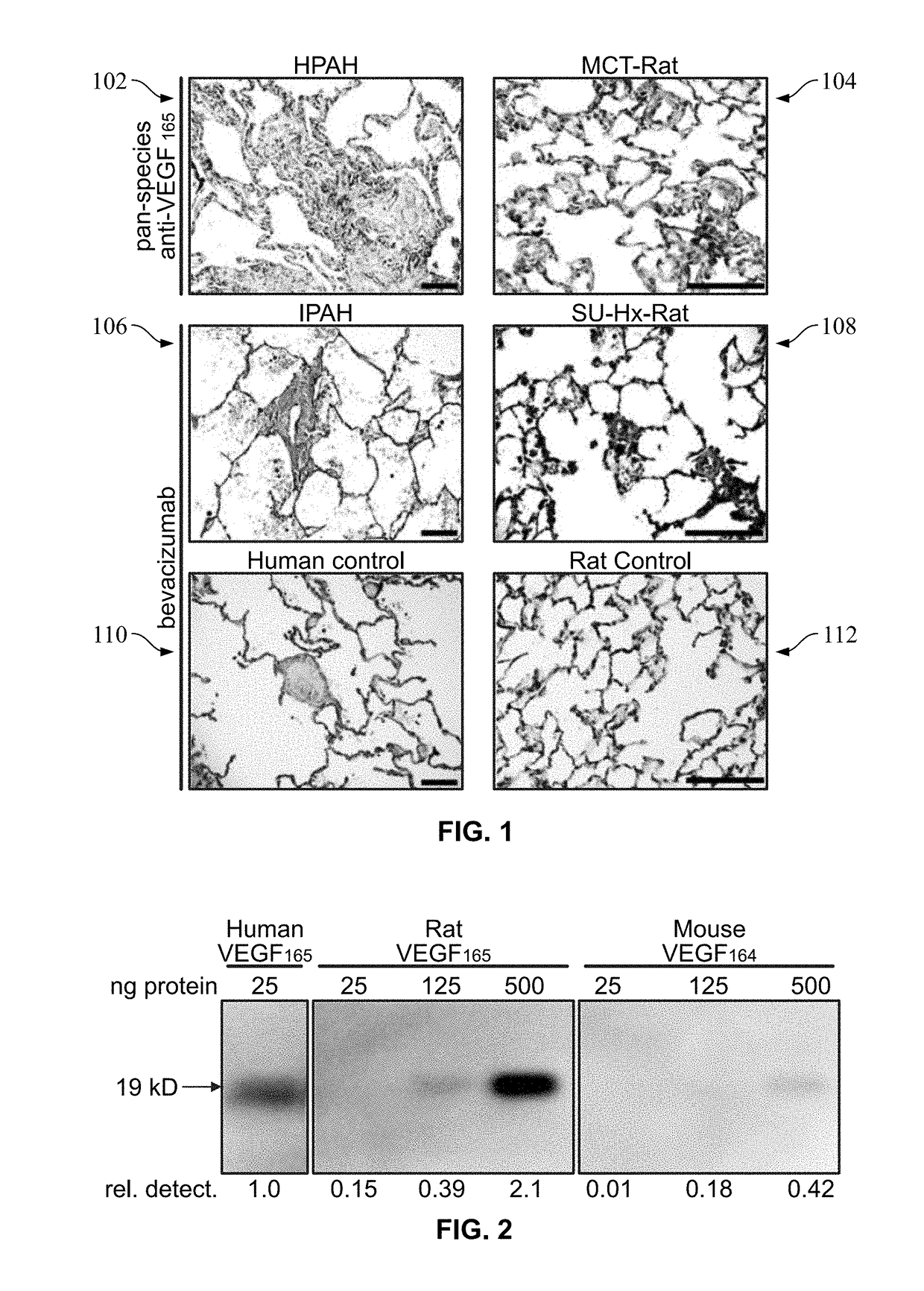Imaging probe for angiogenic activity in pulmonary arterial hypertension
a pulmonary arterial hypertension and imaging probe technology, applied in the field of pulmonary vascular biomarkers, can solve the problems of poor survival rate of ph, poor prognosis, and high mortality of ph
- Summary
- Abstract
- Description
- Claims
- Application Information
AI Technical Summary
Benefits of technology
Problems solved by technology
Method used
Image
Examples
Embodiment Construction
[0038]The embodiments described herein generally relate to an imaging probe for angiogenic activity in pulmonary arterial hypertension. More particularly, the present invention relates to a pulmonary vascular biomarker comprising a radioisotope-conjugated antibody (e.g., 89[Zr]-bevacizamub), wherein the biomarker is used for detecting a disease associated with pulmonary vascular remodeling or for monitoring the efficacy of therapeutics or prophylactics for a disease that is associated with pulmonary vascular remodeling.
[0039]The embodiments described herein relate generally to a comprehensive pre-clinical development program for 89Zr-bevacizumab, a radioisotope-conjugated humanized monoclonal antibody directed against vascular endothelial growth factor (VEGF) as a positron emission tomography (PET) imaging probe for the diagnosis and management of PAH. The embodiments discussed herein implement the theory that PAH may arise from dysregulated angiogenic activity in the pulmonary vasc...
PUM
| Property | Measurement | Unit |
|---|---|---|
| wedge pressure | aaaaa | aaaaa |
| wedge pressure | aaaaa | aaaaa |
| volume | aaaaa | aaaaa |
Abstract
Description
Claims
Application Information
 Login to View More
Login to View More - R&D Engineer
- R&D Manager
- IP Professional
- Industry Leading Data Capabilities
- Powerful AI technology
- Patent DNA Extraction
Browse by: Latest US Patents, China's latest patents, Technical Efficacy Thesaurus, Application Domain, Technology Topic, Popular Technical Reports.
© 2024 PatSnap. All rights reserved.Legal|Privacy policy|Modern Slavery Act Transparency Statement|Sitemap|About US| Contact US: help@patsnap.com










